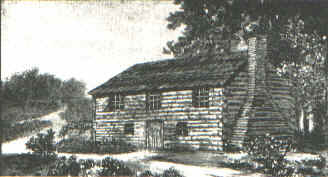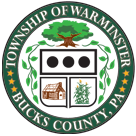Warminster Township History
The Early Years
Long before Willam Penn’s famous treaty with the American aboriginals we call “Indians,” European settlers explored the wilds of what is now known as Bucks County and made their homes here. The trickle which started some years after Columbus made his startling “discovery” increased with each successive expedition to America. Lower Bucks County was much the same as the rest of the country, a few faint Indian trails and an occasional Indian village being the only signs of human habitation. 
When William Penn began, in 1682, to organize his “New Deal” in government in the new country, he had the nucleus of what was later to become one of the most solid and prosperous centers of population, in the country. On June 23, 1683, William Penn bought from the Lenni Lenapes the land “lying between the Pennepack and Neshomamic creeks and all upon the Neshomamic creeks and backward.” General Davis, in his “History of Bucks County” says “the surface of the township is generally level, with but little broken or untillable land. There is no better land in the county than the plains of Warminster which extend eastward to the hills of Neshaminy.”
There were no legal subdivisions in the county before 1692, although for the convenience of collecting taxes and for other municipal purposes, limits and names had already been unofficially given to many settlements. Southampton and Warminster were so called as early as 1685 by the provincial council in drawing up the county borders. The Bucks County court, in 1692, formed the township limits throughout the county for the purpose of more convenient tax collecting. This was done by a jury which met at the Neshaminy Meeting House in Middletown, situated within a mile of what is now known as Langhorne. The settled parts of the county were divided into five townships, four others being mentioned but not returned as geographical subdivisions. For purposes of municipal administration, our Township was described as “Southampton and the lands about it, with Warminster, one.”
In 1703, the court recognized Southampton as a township in itself and it was permitted to elect its own highway supervisor. In March, 1711, Southampton petitioned the court to be separated completely from Warminster in county assessments and tax collections. The petition was granted and the separation became official. For some reason, which has been lost over the years, Southampton in 1712, again petitioned that it be allowed to “remain a township in its entirety.” This has led to some confusion as to the actual date of separation. McReynolds, in his “Place Names in Bucks County” gives the date 1712. Davis’ History of Bucks County states: “The two (Warminster and Southampton) elected but one constable and overseer for several years, and they were not entirely separated in their municipal administration until about 1712.” Other sources are at variance as to the date when each became “a township in its own right,” but it is generally conceded that the first petition on the part of Southampton was made and granted in 1711.
Warminster was named after a small town in County Wiltshire, at the western extremity of Salisbury Plain, England. The name is of Saxon origin – WAR meaning a fortress and MINSTER meaning a church of a monastery.
